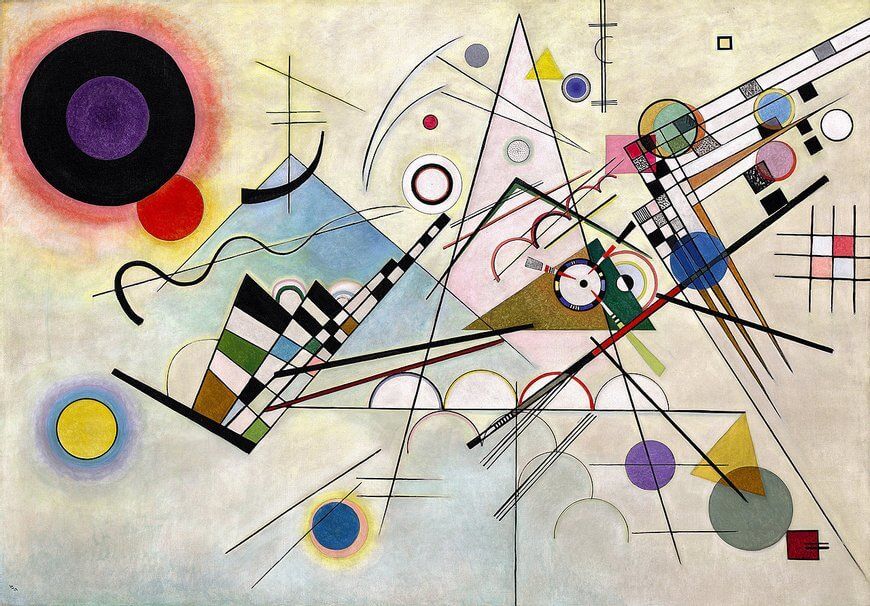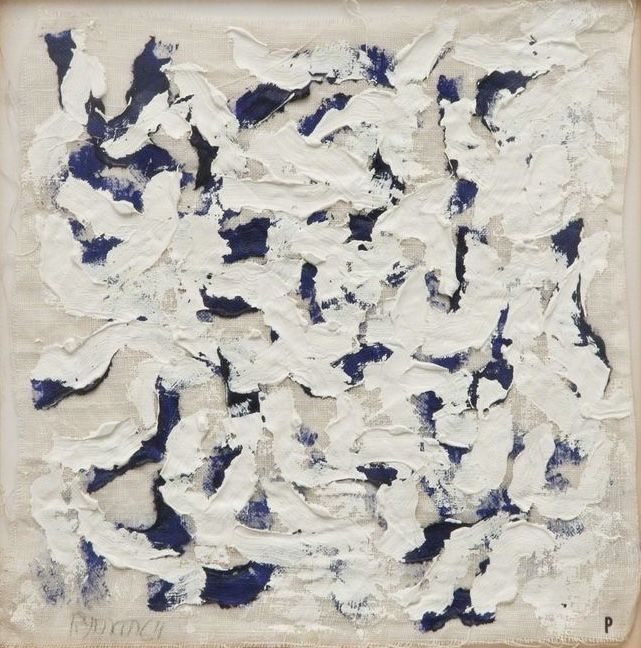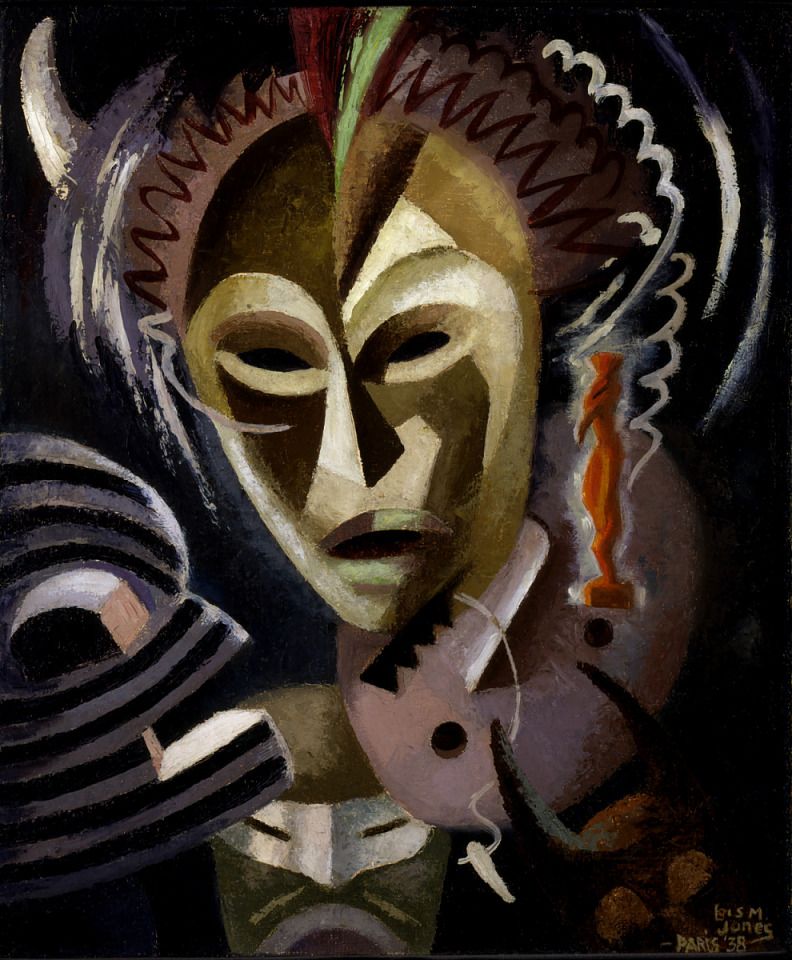
DOCENT PICK
Beyond the Surface: Understanding Abstraction
28/07/2024
Have you ever felt dizzy when facing a canvas without recognizable elements or forms? That is Abstraction.
More than a movement or a set of techniques, abstraction is a quest, an experience that artists want to confront.
Continuing its summer exploration into the global movements that have defined contemporary art, Docent is pleased to present its second capsule dedicated to Abstraction and its legacy.
More than a movement or a set of techniques, abstraction is a quest, an experience that artists want to confront.
Continuing its summer exploration into the global movements that have defined contemporary art, Docent is pleased to present its second capsule dedicated to Abstraction and its legacy.
Early Beginnings and Influences
Abstract art emerged as a response to the rapidly changing world at the turn of the 20th century. Influenced by movements such as Impressionism, Post-Impressionism, and Symbolism, early pioneers sought to break away from the traditional representation of objects.

Artists like Wassily Kandinsky, Kazimir Malevich, and Piet Mondrian began exploring abstraction, focusing on the use of color, form, and line to evoke emotions and ideas rather than depicting the physical world.

For example, Malevich's work, which you can see an example above, focused on basic geometric shapes and pure color, which he believed could convey a sense of purity and spirituality through abstraction.
The Rise of Abstract Movements

From 1910 to 1940, Abstraction becomes more and more accepted in the artistic circles. Pioneering artist Hilma af Klint alternated between esoteric art with abstract forms and genre painting. The history of art, much like it has with many female artists, failed to acknowledge her as one of the pioneers of abstraction, despite her interest in theosophy predating that of Piet Mondrian.

Another female artist, this time American, stands as a leading figure in her artistic scene: Georgia O'Keeffe.
She is renowned for her large-scale, close-up depictions of flowers, which emphasize their intricate details and abstract forms. She also painted dramatic landscapes inspired by the American Southwest, capturing the region's unique beauty with bold colors and sweeping lines. Her technique often involved blending realism with abstraction, creating a sense of intimacy and grandeur simultaneously. O'Keeffe's work reflects a deep connection to nature and a mastery of composition and color.
She is renowned for her large-scale, close-up depictions of flowers, which emphasize their intricate details and abstract forms. She also painted dramatic landscapes inspired by the American Southwest, capturing the region's unique beauty with bold colors and sweeping lines. Her technique often involved blending realism with abstraction, creating a sense of intimacy and grandeur simultaneously. O'Keeffe's work reflects a deep connection to nature and a mastery of composition and color.

However, the narrative of contemporary abstraction has been predominantly shaped by the Irascibles group in New York during the 1940s and 1950s, with a significant emphasis on the notably masculine figure of Jackson Pollock.

Pollock's technique involved dripping and splattering paint onto canvases laid on the floor, creating dynamic and intricate compositions that emphasized spontaneity and movement.
Reinventing the power of the brushstroke as Pollock did has left a profound mark on art history, inspiring artists to continue grappling with the canvas in a struggle with painting.
A new look on Texture

As the 21st century dawned, abstraction continued to reign as the dominant movement in painting, engaging in a dialogue with its sculptural counterpart for over 50 years. Notably, artists like Gerhard Richter showcase their skill and innovation by using a distinctive technique of blurring and scraping paint on canvases to achieve layers of depth and ambiguity. From this point, abstraction returns to its persistent question: can painting transcend the space it occupies?
Pieter Vermeersch explores abstraction through his use of soft, gradient transitions and subtle shifts in color, blurring the lines between painting and architecture. His works often evoke a sense of spatial ambiguity and contemplation, inviting viewers to reflect on the relationship between light, color, and perception.
Take a moment to observe the three artworks above. What emotions do you experience? Perhaps a sense of peace, calmness, and warmth. The paintings not only evoke these feelings but also create a sense of inner space, functioning as a psychological window that allows for exploration of your own emotions. For instance, this strong blue painting by Latifa Echakhch, while abstract, is not silent. It explores themes of cultural identity, memory, and displacement.
Now, what about those two paintings?
They may not be clear at first glance, but they still convey depth and perspective within the canvas. Abstract painters achieve this by using no or almost invisible lines and contrasting colors, pushing the boundaries of traditional painting techniques.
They may not be clear at first glance, but they still convey depth and perspective within the canvas. Abstract painters achieve this by using no or almost invisible lines and contrasting colors, pushing the boundaries of traditional painting techniques.
Researching energies

The exploration of abstraction has often resulted in bold ventures, exemplified by artists like Robert Ryman, who delved into the potency of white in painting. Through his characteristic technique of generous white brushstrokes against a colored background, Ryman creates a distinctly tactile sensation that emanates from the white mass, engaging the audience in a unique sensory experience. His renowned belief that 'There is never any question of what to paint, only how to paint' encapsulates his approach to artistry.
Today artist such as Gerda Scheepers continue to build on this legacy, in search of deeper connection with the material.
Deconstruction

The contemporary evolution of abstract art is also one closely linked with new possibilities to transcribe the complexity of our body.
One of the artist that used abstraction to explore the human body isFrancis Bacon. His visceral and distorted depictions of the human form, were often characterized by raw emotion and existential angst. They convey a sense of psychological intensity and turmoil.
One of the artist that used abstraction to explore the human body isFrancis Bacon. His visceral and distorted depictions of the human form, were often characterized by raw emotion and existential angst. They convey a sense of psychological intensity and turmoil.
In these two works by Piotr Janas and Pol Taburet, we discern the human figure despite the almost complete absence of conventional elements that typically define it. The materiality of the body has melted away, distilled through abstraction, while the soul remains, silent amidst the emptiness.

Today, a reinterpretation of the abstract art movement allows for a deeper examination of certain subjects. Among these, African culture, particularly its rituals and masks, fascinated artists who encountered them in the early 20th century, as seen in the work of Lois Mailou Jones. The allure of the spiritual aspects of traditional African aesthetics continues to inspire contemporary artists' exploration and contemplation today.